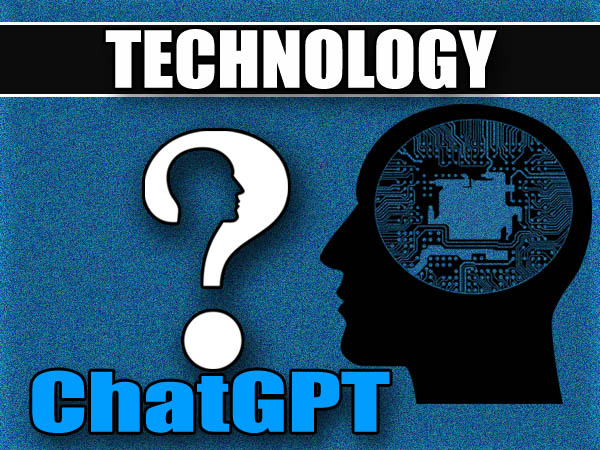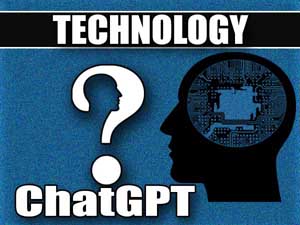ChatGPT: How Changed Artificial Intelligence

Introduction
Artificial intelligence (AI) has become a natural part of our lives, making things easier and more enjoyable. And there’s one incredible innovation that’s truly changing the game: ChatGPT. In a surprisingly short time, ChatGPT has amazed people all over the world. It can chat with you like a real person, understanding your thoughts and even evoking emotions. Let’s take a closer look at ChatGPT and see how it’s shaping our world in incredible ways.
In the exciting world of advanced technology, artificial intelligence (AI) has taken huge leaps forward, leaving us in awe of its incredible potential. And right at the forefront of this AI revolution is ChatGPT, a truly remarkable creation by OpenAI. With its powerful algorithms and deep understanding of language, ChatGPT is transforming the way we communicate with computers. Get ready to embark on a journey into the fascinating realm of ChatGPT, where human-like conversations and meaningful interactions come to life. Brace yourself for an experience that will leave you amazed and eager to explore the possibilities of AI.
Understanding ChatGPT
ChatGPT is a smart computer program that can talk like a human. It learns by reading lots of information from the internet. It uses this knowledge to understand what people are saying and give helpful answers. ChatGPT is used in chatbots, virtual assistants, and customer support systems to make them better at talking with people.
Natural Language Processing
One of the key strengths of ChatGPT lies in its ability to understand and process natural language. Through sophisticated algorithms, it can comprehend complex sentence structures, detect sentiment, and infer meaning from context. This natural language processing capability allows ChatGPT to engage in fluid and meaningful conversations with users, enhancing the overall user experience.
Contextual Understanding
ChatGPT excels in maintaining context throughout a conversation. Unlike traditional chatbots that often struggle to retain information from previous interactions, ChatGPT can remember and reference prior messages, resulting in more coherent and context-aware responses. This contextual understanding makes interactions with ChatGPT feel more human-like and fosters a sense of continuity.
Domain Adaptation
Another significant advantage of ChatGPT is its adaptability to different domains. By fine-tuning the model on specific datasets, developers can train ChatGPT to specialize in various areas such as customer service, healthcare, or finance. This allows businesses to create tailored conversational agents that cater to specific industry requirements, improving customer satisfaction and efficiency.
Ethical Considerations
As with any AI technology, ethical considerations are paramount. ChatGPT relies on the data it is trained on, which means biases present in the training data can potentially influence its responses. OpenAI is actively working to mitigate biases and ensure that ChatGPT provides fair and unbiased interactions. Ongoing research and user feedback play a crucial role in refining the system and addressing any concerns.
Conclusion
ChatGPT has emerged as a game-changer in the realm of conversational AI. Its ability to understand natural language, maintain context, and adapt to specific domains make it a powerful tool for businesses and developers. As the technology continues to evolve, OpenAI is committed to refining and enhancing ChatGPT, creating more inclusive and reliable conversational experiences. With ChatGPT, the future of human-computer interactions is taking a giant leap forward.
Remember to subscribe to our blog for the latest updates on ChatGPT and join the conversation by leaving a comment below. Discover the transformative power of ChatGPT and unlock a new world of possibilities in conversational AI.
FAQs
- What is ChatGPT?
ChatGPT is an advanced language model developed by OpenAI. It is designed to generate human-like responses in natural language conversations. It is trained on a vast amount of text data from the internet, enabling it to understand queries and provide relevant and coherent responses. - How does ChatGPT work?
ChatGPT utilizes deep learning techniques, specifically transformer models, to process and understand natural language. It learns patterns and context from the training data and uses that knowledge to generate responses based on the input it receives during conversations. - What can ChatGPT be used for?
ChatGPT has a wide range of applications. It can be used to power chatbots, virtual assistants, customer support systems, and more. It can provide information, answer questions, and engage in interactive conversations with users. - How accurate is ChatGPT?
ChatGPT strives to generate accurate and relevant responses. However, it is important to note that it may occasionally produce incorrect or nonsensical answers, especially when presented with ambiguous or misleading input. OpenAI continues to refine the model to improve its accuracy. - Can ChatGPT understand context?
Yes, ChatGPT has the ability to maintain context throughout a conversation. It can remember and reference prior messages, allowing for more coherent and context-aware responses. This contextual understanding enhances the overall conversational experience. - Is ChatGPT biased?
ChatGPT learns from the data it is trained on, which can potentially include biases present in the training data. OpenAI acknowledges this concern and is actively working to mitigate biases and ensure fair and unbiased interactions. User feedback plays a vital role in addressing and improving upon any biases that may arise. - Can ChatGPT be customized for specific industries or domains?
Yes, ChatGPT can be fine-tuned and customized for specific industries or domains. By training the model on specialized datasets, developers can create conversational agents that cater to specific industry requirements, such as customer service, healthcare, or finance. - How can developers integrate ChatGPT into their applications?
OpenAI provides an API (Application Programming Interface) that allows developers to integrate ChatGPT into their applications or systems. The API provides the necessary tools and documentation to facilitate the integration process. - Is ChatGPT available for public use?
Yes, ChatGPT is available for public use. OpenAI offers access to ChatGPT through their website or API, allowing developers and businesses to leverage its capabilities for various applications.
Remember, these FAQs provide general information about ChatGPT. For specific details and updates, it’s always best to refer to OpenAI’s official documentation and resources.
Sources
Related Searches
